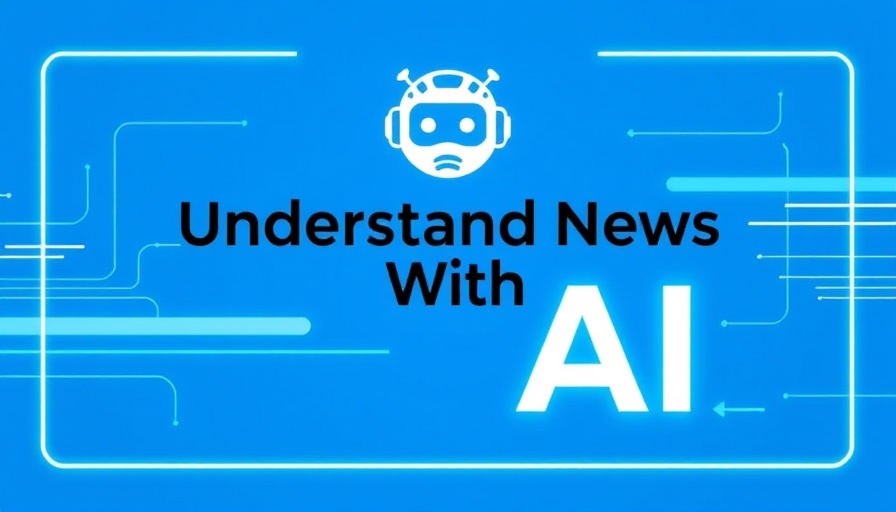
Microsoft's Layoffs: A Trend or a Tipping Point?
Earlier this month, Microsoft stirred not just the tech world, but every working environment, with the announcement of substantial layoffs affecting nearly 6,000 employees. This move raised a pressing question on the minds of many: as companies increasingly turn to AI, are they inadvertently sacrificing the very essence that makes them successful? While some may view replacing humans with machines as an easy solution, the broader implications deserve a closer examination.
The Dual Edges of AI Integration
At face value, integrating AI into various sectors seems to streamline operations. Automation often enhances efficiency, reduces costs, and can accelerate decision-making processes. Following Microsoft's example, numerous companies in the tech sphere have adopted AI strategies, driven by concerns about competition and the need for agility. However, this surge of AI also brings about an important counterpoint: what happens to the human capital that originally drove these companies to success?
Dangers of Over-Reliance on Technology
The euphoria surrounding AI often masks the potential dangers associated with its over-reliance. For instance, AI systems lack emotional intelligence, creativity, and the nuanced understanding that comes with human experience. In a context where complex problem solving, customer relations, and strategic innovation are prized, human employees provide an irreplaceable service. Algorithms may assess employee performance, as seen in Microsoft's layoffs where algorithmic assessments played a crucial role, yet such reliance raises ethical concerns about fairness and accuracy in assessing human potential.
Future Trends: Balancing AI and Human Touch
The forecast for many industries shows a continued trend of integrating AI while still recognizing the value of human labor. Major players need to realize that an ideal route is not total automation but a harmonious coexistence. Companies must embrace AI as a tool for augmentation rather than as a complete replacement for their workforce. A blended approach could enable organizations to harness the power of technology while still valuing the creativity and emotional intelligence that only humans can provide.
Case Studies: Successful Blends of AI and Human Capital
Businesses that have elegantly navigated AI's integration while preserving their human workforce serve as exemplary models. For instance, in the customer service realm, some companies have introduced AI chatbots to handle routine inquiries but retain human representatives for complex issues. This strategy preserves customer relationships while optimizing operational efficiencies. Such case studies provide valuable insights into how leveraging both human and artificial resources can result in a more resilient workforce.
Decisions Business Leaders Must Make
Business leaders must engage in deliberate decision-making concerning AI implementation. Rather than succumbing to the temptation of cost-cutting through layoffs and automation, they must seek sustainable practices that prioritize human capital. Cultivating an environment that values training and development is essential for ensuring employees feel secure in their positions and empowered by new technologies.
Unpacking Layoffs: Emotional and Practical Perspectives
The human cost of layoffs stemming from AI integration often gets overlooked. Individuals not only lose jobs, but also their sense of identity and purpose. Communities may face economic shifts, further amplifying the effects of these layoffs. For instance, the loss of employees in tech hubs can ripple through local economies, altering consumer behaviors and community dynamics. As stories of job loss circulate, it becomes imperative for both companies and communities to assess the emotional ramifications, ensuring that those affected receive support.
Building a Compassionate Transition Strategy
Companies can shift the narrative around layoffs by implementing compassionate transition strategies. Programs that offer retraining, support for job searching, and mental health resources can help impacted employees transition smoothly into new roles. This not only aids individuals but fosters goodwill between companies and their communities, suggesting that businesses care for their workforce beyond profit margins.
The discussion surrounding AI job cuts and their implications is far from simple; it delves into how we envision the future of work. While businesses like Microsoft set precedents, we must advocate for approaches that value the individual and the community. Protecting human jobs from AI encroachment necessitates creative thinking and a commitment to preserving the very heart of our working environments.
To secure a future where both AI and human labor thrive, proactive steps are necessary. Let’s engage in conversations that bring together local entrepreneurs, tech enthusiasts, and workforce advocates to forge a collaborative path forward — where technology amplifies human excellence rather than replaces it.
 Add Row
Add Row  Add
Add 




Write A Comment